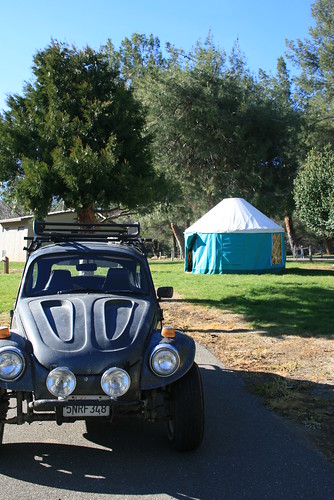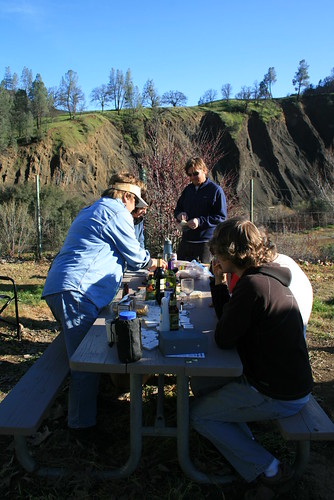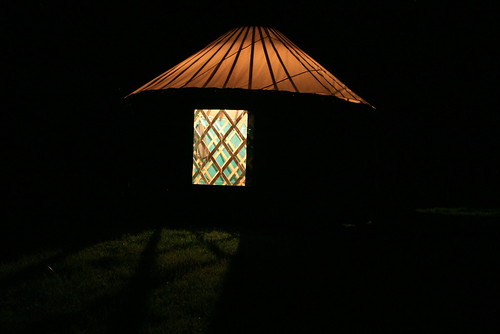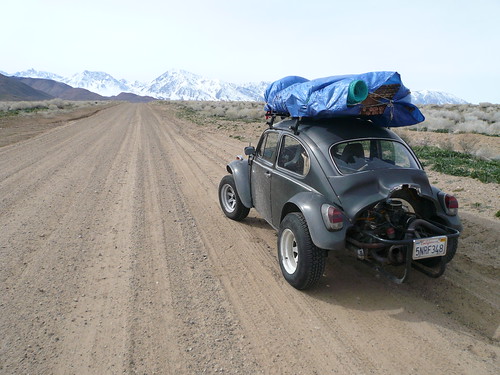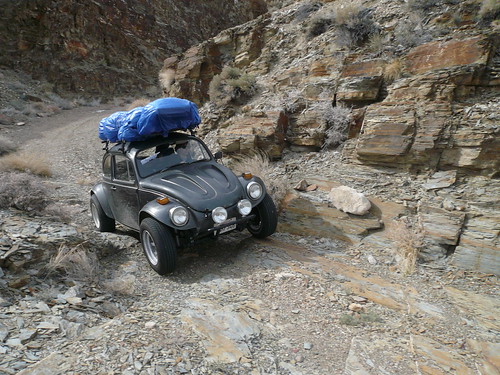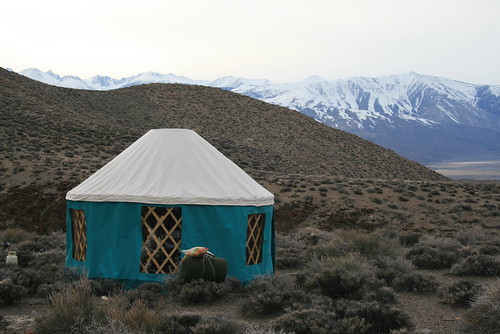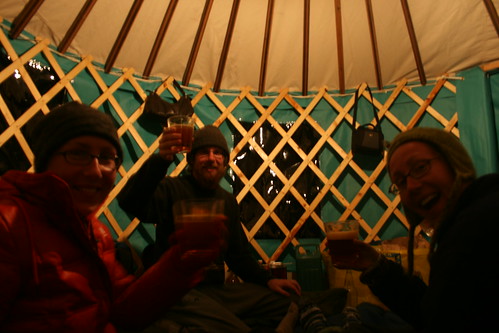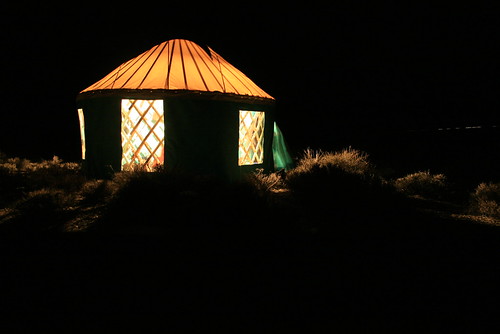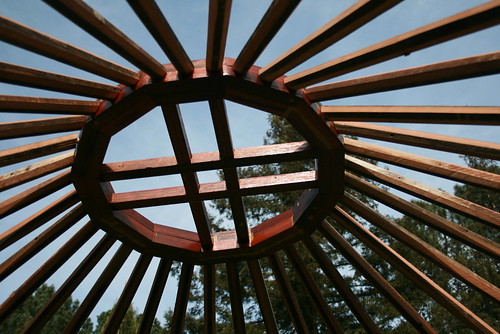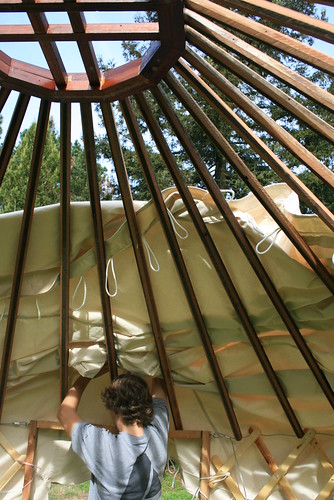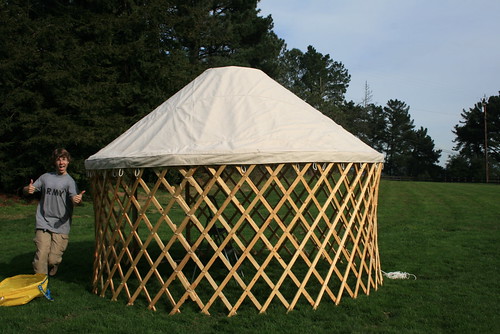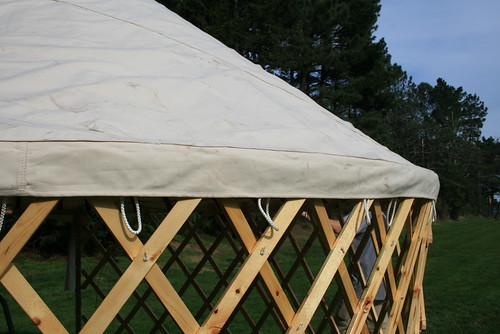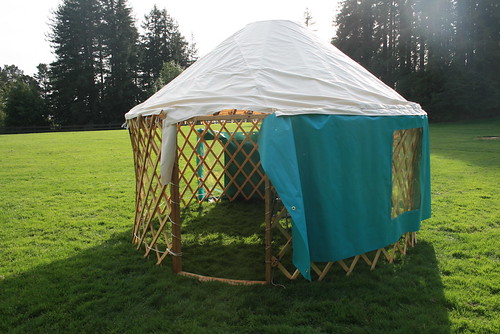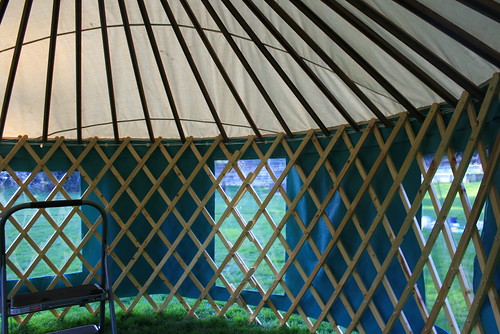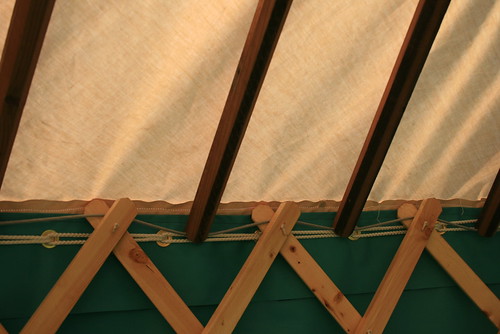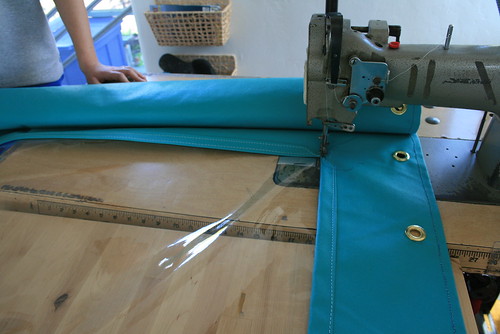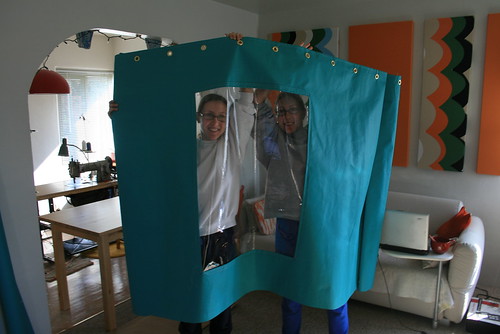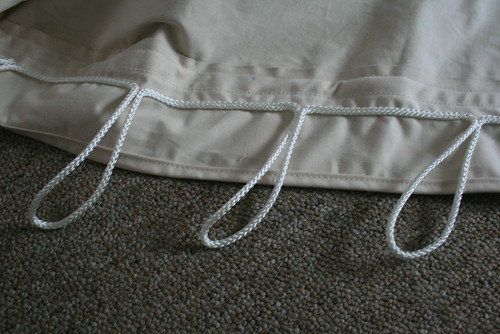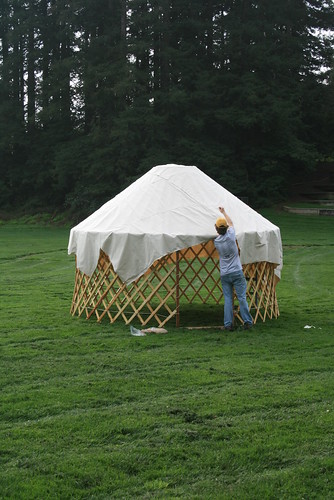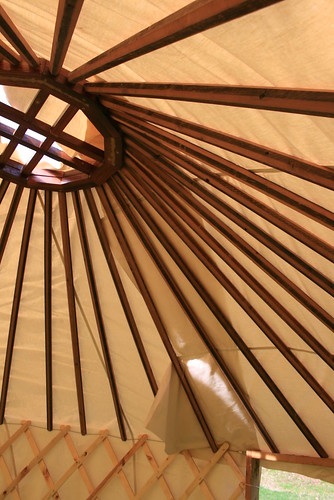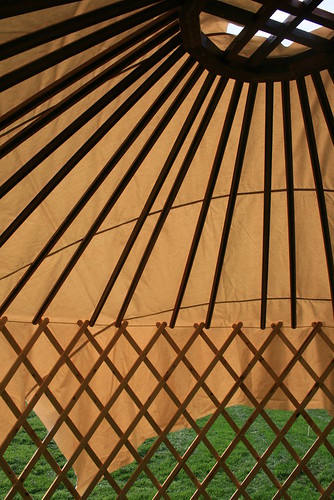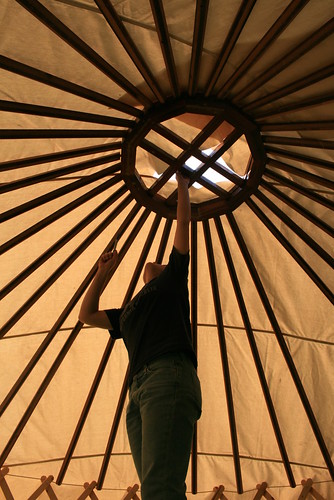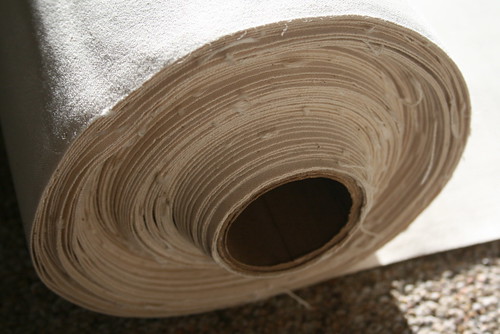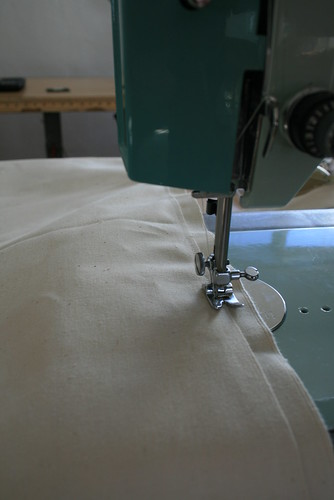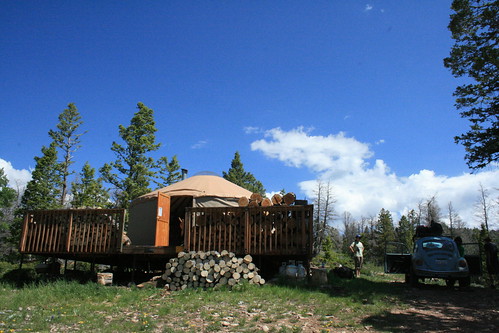
The Limber Flag Yurt, available to rent from the Ashley National Forest.
Then we headed up a bunch of switchbacks out of Vernal on Hwy 191, climbing to 9,000ft into the Ashley National Forest. In the dark, we drove down some dirt roads, until finally we got to one section of forest road 254 that was just too steep for us. The carburetor was starting to get bad, and we didn't have the full power we normally have in the baja. So we couldn't make it up and we were a mile short of the yurt! But Nicole and Marcel also couldn't make it all the way up either, and in the dark, we saw their baja parked off the road in a grassy field on the mountainside. We had no other choice but to pack our hiking backpacks with what we needed for the night and start hiking up the mountain. It was midnight, but a bright moon again lit our way. We told N&M that if they didn't see us at the yurt by midnight, then they should come look for us. Half a mile or so up the trail, we saw flashlights and heard voices. It was N&M on their way - search and rescue! Nothing like hiking up a mountain at midnight and be greeted by family. So we finally made it to the yurt at about 1am, and we were ready to go to sleep!
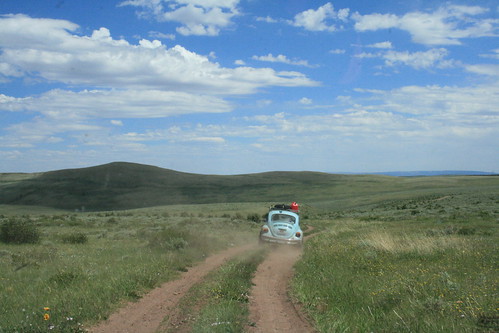
Driving behind N&M's baja at 9,000ft in the Uinta mountains.
The next morning, we woke up to an awesome view of the mountain range we were in, and a nice forested mountainside with pine trees and birch trees. There were wildflowers everywhere! But we didn't hike up last night with anything but the bare essentials: sleeping bag, water, and warm cloths. So all of our food was down by the car. After having coffee we hiked back down to the cars. Then we worked on them for a good few hours, fixing this and that, trying to see why the carb was suddenly not wanting to cooperate. Romy determined that the throttle shaft had too much play and didn't seal, so air was constantly leaking into the fuel system. The car wouldn't idle at all, and every time we let off the gas suddenly, the engine would backfire a lot! But we could still drive. After fiddling with it for a few hours, we decided to drive down into Vernal to see the famous petroglyphs.
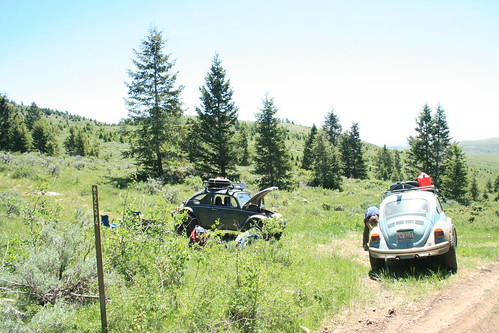
Fixing up the bajas down the mountainside from the yurt.
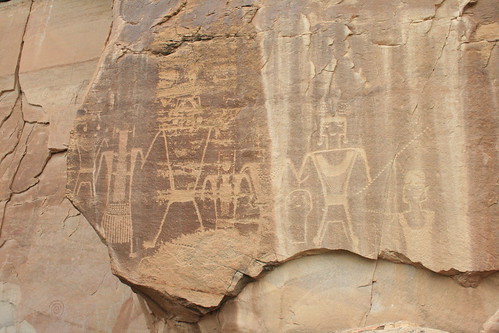
The petroglyphs near Vernal, UT.
The petroglyphs were on private property, along a sandstone cliff wall that was eroded by a river that flowed right near Vernal. The ranchers who owned the cliffs made a little parking area and trail so that the public could see the petroglyphs. And it was free, and nice that nobody tried to profit off of it. We went far along the cliffs, and saw a lot of glyphs which represented head hunters or something. Lots of drawings of men in costume and necklaces holding small heads in both hands. Weird!
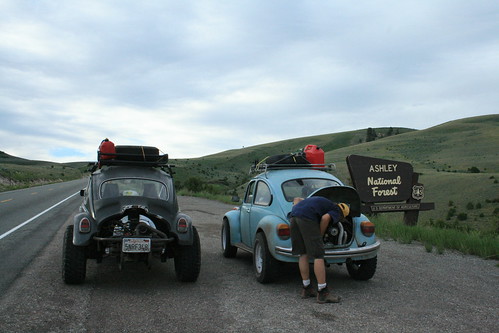
Stopping on the side of Hwy 191 to let N&M's baja cool down, after going up so many switchbacks. 8% grade!
Then we went back to the yurt when the sun was going down. We drove up and up and up, until we got to the turn off on Hwy 191 that took us off road to the yurt. Nicole wanted to drive her baja off road, and I went with her in the passenger seat. At first she was driving like a grandma, but then she finally picked up some speed. She just pressed down the gas and with all the speed, we made it higher up the steep part of the road then they had the night before. Nicole thought that they would have enough power to make it up the steep road all the way to the yurt if they unloaded the car a little and picked up speed and never let off the gas. So we tried it. We packed all of the unnecessary stuff into our baja, and drove N&M's baja down the hill to get a good running start. We instructed Marcel to just step on the gas and never let off until he was at the yurt. Thats one mile uphill, over dirt and rocks and uneven terrain. I started walking up to the yurt about 15 minutes before he started the drive, and when I was almost up, I just heard the baja engine in high revs and saw a little blue bug ripping up the road with a huge cloud of dust behind it! It was Marcel going crazy up the mountain! He made it all the way. The best part was, we didn't have to carry anything up the road anymore!
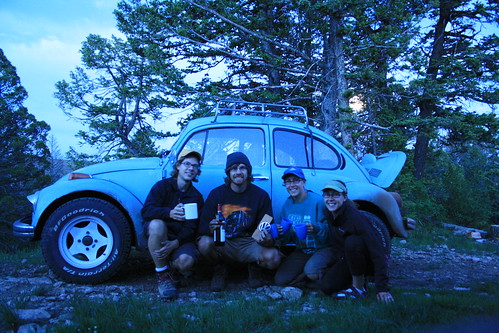
We made it up to the yurt with N&M's baja and now we're celebrating with a bottle of wine!
We spent the second night at the yurt with a nice big campfire outside (and one inside later in the wood burning stove) and we opened up a bottle of wine that N&M bought over a year and a half ago in Sonoma Valley, CA. They were saving it for the first trip they would take in their baja long distance. We had a ton of fun that night, and cooked brats over the open fire.
The next morning it was time to leave! The time flew by too fast up at the yurt! Before we left though, we wanted to check out how the yurt was built. Romy was examining the roof flap to see how the roof was attached and when he peeled back the vinyl, he disrupted a sleeping bat! It squeeked and after we all took a look, we left it alone. Then it was time to head out.
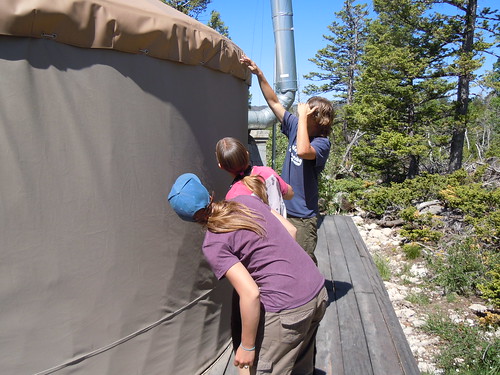
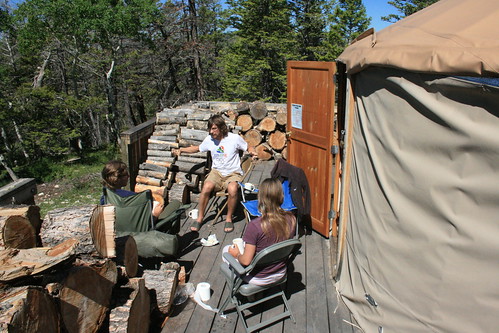
Relaxing on the yurt's front porch!

